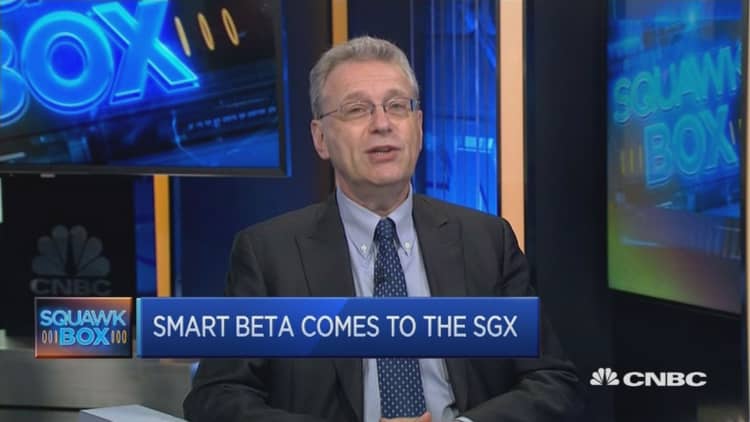
Mark 2016 as the latest Year of the Stock Picker that wasn't.
Active funds stumbled through another brutal year, with barely 1 in 3 large-cap managers able to beat the , according to figures released Wednesday by S&P Dow Jones Indices. The news got worse farther down the scale, with 89.4 percent of mid-cap managers falling short and 85.5 percent of small-cap managers missing.
Things didn't get better over longer time frames either, with most managers falling short over 1-, 3-, 5-, 10- and 15-year spans.
The numbers come amid a pitched market debate over the benefits of active against passive management, and seemingly annual predictions that stock-picking finally will prevail.
Active managers oversee funds for which they move in and out of individual stocks, utilizing a variety of strategies, while passive funds track indexes and don't employ professional managers. Active funds generally carry much higher fees.
Investors have been shoveling money into passive strategies. Exchange-traded funds, most of which track indexes, saw record inflows of cash during the first quarter on both the stock and bond side. In 2016, passive funds attracted a net $508.4 billion while active suffered $340.1 billion in outflows, according to Morningstar.
"Its been a dismal backdrop in a dismal environment for active. The numbers prove that," said Nick Colas, chief market strategist at Convergex. "Does that mean that environment will last forever? Markets always go in cycles."
Colas believes a decline in correlations, or the tendency of stocks to move in unison that has been pronounced during the current bull market, will benefit active managers looking to capitalize on pricing discrepancies.
But the latest report on active management performance, in the closely watched SPIVA U.S. Scorecard from S&P, paints an even bleaker picture over the long term.
For the first time, the scorecard tracked 15-year performance to capture what it considers a "complete market cycle."
In that period, 92.2 percent of large-cap managers missed their marks, while the number was 95.4 percent for mid-caps and 93.2 percent for small-caps. It's probably no wonder, then, that more than 58 percent of U.S. equity funds either folded or merged during the 15-year time frame.
To be sure, the scorecard is sometimes discounted because S&P sells index products. However, the underperformance of active jibes at least in a broad sense with measures from other sources on Wall Street.
JPMorgan Chase, for instance, reported that active managers actually have gotten off to a stronger start in 2017, but the beat rate for large-cap is barely better than half at 52 percent.
Advocates of active management stress that investors need to know what factors to look for in managers, including performance, strategy and market conditions.
Bob Doll, senior portfolio manager at Nuveen Asset Management, said market conditions are conducive this year for his side of Wall Street. Among them: the likelihood that small-cap stocks will outperform this year, that international will outperform the U.S., and that value stocks are topping growth, by a wide margin.
"Among these factors are the tailwinds that enable active managers, given their portfolio construction, to win, and we're heading into that environment," he said in a video presentation for clients. "So this should be a good year."

Investors who want the possibility of getting outsized returns need to screen managers for various qualities, said Steve Deschenes, product management and analytics director at Capital Group, which runs American Funds and manages more than $1.4 trillion in assets.
Among desirable qualities are lower fees and managers who own the investments they are endorsing for clients, he said.
"Once you incorporate reasonable screens that any reasonable advisor and certainly most practitioners employ, you can drastically improve your success rate," Deschenes said. "It doesn't really matter if 20 percent of managers beat the index. What matters is, can you identify the 20 percent and take advantage of that identification in your portfolio?"
Indeed, performance among different strategies has differed considerably, though all have still fallen considerably short of market benchmarks.
Over the past three years, for instance, just 4.4 percent of large-cap growth managers have outperformed, while the number is 11.4 percent for large-cap value. The best performance over the three-year span was for multi-cap value funds, which had a 17.8 percent beat rate.
Here's a look at how all fund categories performed:
Correction: An earlier version mischaracterized the percentage of managers who beat the S&P 500.


